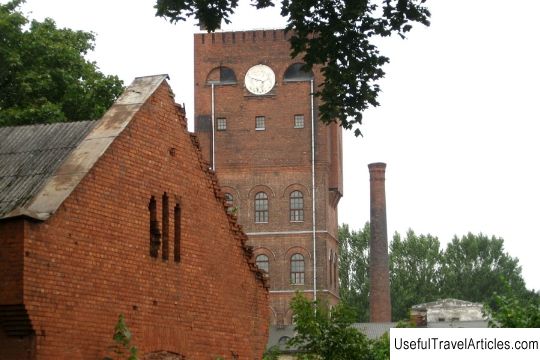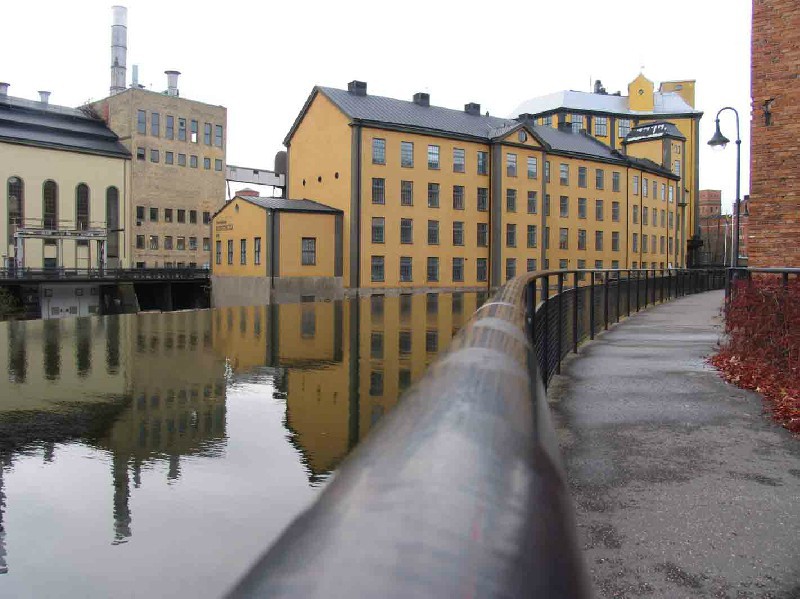Factories in the Derwent Valley, UK
Rating: 8,5/10 (9011 votes)  On the territory of the valley of the British river Derwent, there is a whole complex of buildings that were once, or rather, in the 18th and 19th centuries, textile factory premises, as well as housing for workers. All this together is a valuable monument to the socio-economic development of this region. The entire factory landscape is listed as a UNESCO World Heritage Site.
There are three main factories that make up the complex. The Cromford factory was the first and laid the foundation for all production. It was built in 1772-1775, and at first its construction was of an experimental nature. The buildings were placed along the cliff and linked into a single system, and the waters of the nearby Bonsall Brook and Cromford Pond were used as energy sources for its operation.
Construction planner Richard Arkwright also built living quarters for workers and their families. There were about 20 buildings in total. Together, they formed a kind of workers' community, the format of which was taken as an example by other factory settlements of the Derwent River Valley.
During its existence, the factory has changed more than one owner, and some of its equipment even ended up in the London Science Museum. Today the historic building is open for excursions and has been somewhat renovated. Other buildings were almost completely destroyed during the fires of 1929 and 1961.
The Masson factory was established in 1783 in close proximity to the River Derwent, making it more powerful from the outset than the Cromford factory. However, its architecture largely repeated its predecessor. The central aisles were decorated with Venetian windows and even a dome. Basically, this factory worked at the expense of two fairly powerful water mills. Today, there is another museum with a souvenir line with it.
The Darley Abbey factory - another part of the factory complex - was built by the brothers Thomas and Edmund Evans. After it was destroyed by fire, a new one was immediately built in its place, which in 1796-1805 significantly expanded its territory. Today, the factory buildings are used as offices for several companies.
In addition to those listed, the complex includes the Silk Factory, as well as the Belper, Milford, Smidley and Pikuosh textile factories. On the territory of the valley of the British river Derwent, there is a whole complex of buildings that were once, or rather, in the 18th and 19th centuries, textile factory premises, as well as housing for workers. All this together is a valuable monument to the socio-economic development of this region. The entire factory landscape is listed as a UNESCO World Heritage Site.
There are three main factories that make up the complex. The Cromford factory was the first and laid the foundation for all production. It was built in 1772-1775, and at first its construction was of an experimental nature. The buildings were placed along the cliff and linked into a single system, and the waters of the nearby Bonsall Brook and Cromford Pond were used as energy sources for its operation.
Construction planner Richard Arkwright also built living quarters for workers and their families. There were about 20 buildings in total. Together, they formed a kind of workers' community, the format of which was taken as an example by other factory settlements of the Derwent River Valley.
During its existence, the factory has changed more than one owner, and some of its equipment even ended up in the London Science Museum. Today the historic building is open for excursions and has been somewhat renovated. Other buildings were almost completely destroyed during the fires of 1929 and 1961.
The Masson factory was established in 1783 in close proximity to the River Derwent, making it more powerful from the outset than the Cromford factory. However, its architecture largely repeated its predecessor. The central aisles were decorated with Venetian windows and even a dome. Basically, this factory worked at the expense of two fairly powerful water mills. Today, there is another museum with a souvenir line with it.
The Darley Abbey factory - another part of the factory complex - was built by the brothers Thomas and Edmund Evans. After it was destroyed by fire, a new one was immediately built in its place, which in 1796-1805 significantly expanded its territory. Today, the factory buildings are used as offices for several companies.
In addition to those listed, the complex includes the Silk Factory, as well as the Belper, Milford, Smidley and Pikuosh textile factories.We also recommend reading The Eagle and Child Pub in the UK, Oxford Resort Topic: Factories in the Derwent Valley, UK. |




